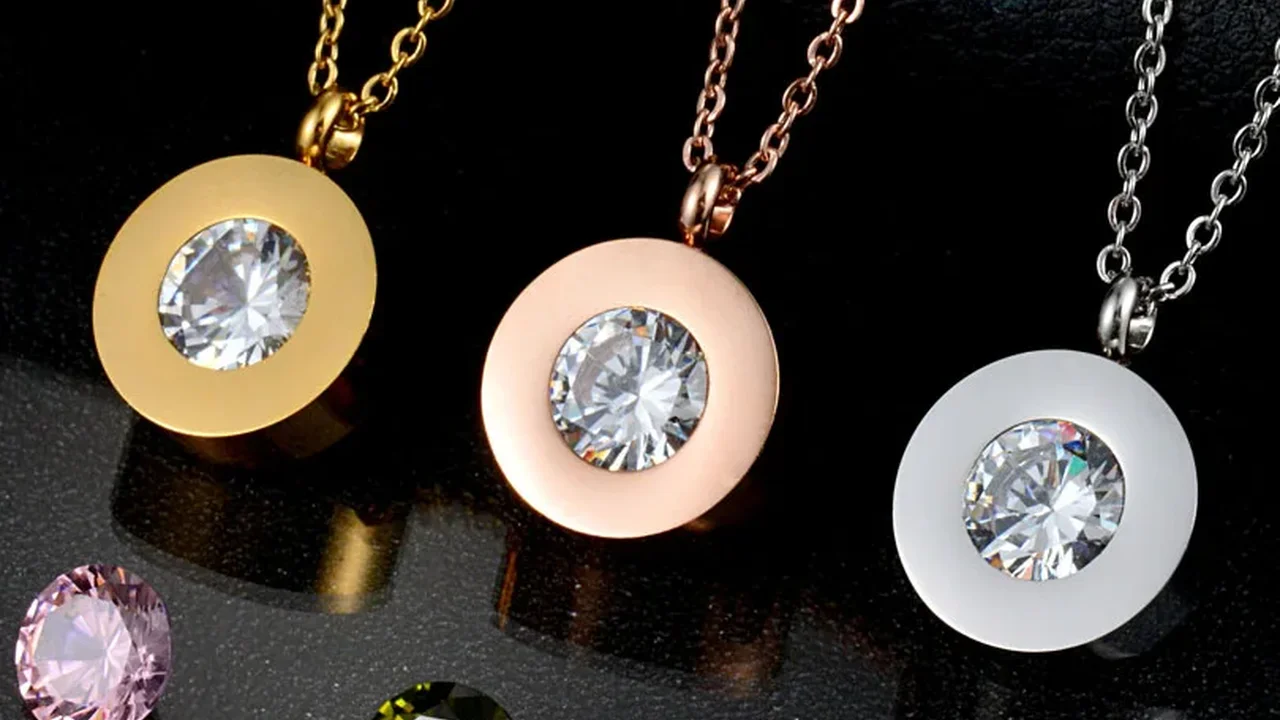Jewelry Market Analysis The Impact of Economic Factors
Explore market opportunities in Southeast Asia for jewelry. Understand the cultural influences, consumer behaviors, and growth potential.

Southeast Asia Jewelry Market An Overview
Alright, let's dive into the exciting world of jewelry in Southeast Asia! This region is a goldmine (pun intended!) for jewelry businesses, boasting a diverse range of cultures, booming economies, and a growing appetite for luxury goods. We're talking about countries like Singapore, Thailand, Indonesia, Malaysia, the Philippines, and Vietnam – each with its own unique quirks and consumer preferences. Forget cookie-cutter marketing; you need to understand the nuances of each market to really make a splash.
Cultural Influences on Jewelry Preferences in Southeast Asia
Culture is king (or queen!) when it comes to jewelry buying in Southeast Asia. Think about it: weddings, festivals, religious ceremonies – jewelry plays a huge role in all of these events. In some cultures, gold is seen as a symbol of wealth and prosperity, while in others, specific gemstones are believed to bring good luck or ward off evil spirits. For example:
- Gold in Vietnam: Gold is hugely popular, especially during Tet (Vietnamese New Year). It's often bought as an investment or given as gifts.
- Pearls in the Philippines: The Philippines is famous for its South Sea pearls, which are often incorporated into traditional jewelry designs.
- Jade in Singapore and Malaysia: Jade is highly valued for its beauty and perceived metaphysical properties.
- Thai Gold Jewelry: Known for its high purity and intricate designs, often featuring religious motifs or traditional patterns.
Understanding these cultural nuances is crucial for designing jewelry that resonates with local consumers. Are you designing a bridal collection? Research the specific wedding traditions in each country. Are you creating a line of everyday wear jewelry? Consider the symbolism and meanings associated with different gemstones.
Consumer Behaviors in the Southeast Asian Jewelry Market
So, who's buying jewelry in Southeast Asia? Well, it's a mix of different demographics, each with their own motivations and spending habits. You've got:
- The Affluent: High-net-worth individuals who are looking for high-end, luxury pieces from established brands. They're often drawn to exclusivity, craftsmanship, and investment value.
- The Middle Class: A rapidly growing segment that's becoming increasingly interested in jewelry as a form of self-expression and status symbol. They're often more price-conscious but still willing to spend on quality and design.
- Younger Consumers: Millennials and Gen Z are driving demand for trendy, affordable jewelry that reflects their personal style. They're heavily influenced by social media and celebrity endorsements.
Understanding these consumer behaviors can help you tailor your marketing strategies and product offerings. For example, if you're targeting younger consumers, you might want to focus on social media marketing and collaborate with local influencers. If you're targeting the affluent, you might want to invest in high-end boutiques and offer personalized service.
Growth Potential in the Southeast Asia Jewelry Market
The Southeast Asia jewelry market is booming, and it's expected to continue growing in the coming years. Several factors are driving this growth:
- Economic Growth: The region's economies are expanding rapidly, leading to increased disposable income and a greater demand for luxury goods.
- Urbanization: More and more people are moving to cities, where they have access to a wider range of retail options and are more exposed to global trends.
- Tourism: Southeast Asia is a popular tourist destination, and many tourists purchase jewelry as souvenirs or gifts.
- E-commerce: The rise of e-commerce is making it easier for consumers to buy jewelry online, opening up new opportunities for businesses to reach a wider audience.
To capitalize on this growth potential, you need to have a solid understanding of the market, a strong brand, and a well-executed marketing strategy.
Product Recommendations and Examples for the Southeast Asian Market
Okay, let's get down to brass tacks. Here are some specific product recommendations and examples that could resonate well with Southeast Asian consumers:
Gold Jewelry with Cultural Motifs
Product: 24K Gold Pendant featuring a stylized dragon (symbol of good fortune in many Asian cultures).
Description: A delicate yet eye-catching pendant crafted from pure 24K gold. The dragon design is inspired by traditional artwork and is believed to bring good luck and prosperity to the wearer.
Use Case: Perfect for everyday wear or special occasions like Chinese New Year.
Price: $800 - $1200 (depending on the size and weight of the gold).
Comparison:
- Alternative 1: 18K Gold Pendant with a lotus flower design (symbol of purity and enlightenment). This option would be more suitable for consumers who prefer a more subtle and elegant design. Price: $500 - $800.
- Alternative 2: Gold-plated pendant with a similar dragon design. This option would be more affordable for price-conscious consumers. Price: $50 - $100.
Pearl Jewelry with Modern Designs
Product: South Sea Pearl Earrings with Diamond Accents.
Description: Elegant earrings featuring lustrous South Sea pearls, surrounded by a halo of sparkling diamonds. The design is modern and sophisticated, making them suitable for both formal and casual wear.
Use Case: Ideal for weddings, parties, or a night out on the town.
Price: $1500 - $3000 (depending on the size and quality of the pearls and diamonds).
Comparison:
- Alternative 1: Freshwater Pearl Earrings with a simpler design. This option would be more affordable and suitable for everyday wear. Price: $200 - $500.
- Alternative 2: Tahitian Pearl Earrings with a darker, more exotic look. This option would appeal to consumers who prefer a more dramatic and unique style. Price: $2000 - $4000.
Gemstone Jewelry with Symbolic Meanings
Product: Jade Bracelet with Silver Accents.
Description: A beautiful bracelet featuring smooth, polished jade beads, accented with intricate silver detailing. Jade is believed to bring good luck, health, and prosperity to the wearer.
Use Case: A thoughtful gift for someone you care about or a stylish addition to your own jewelry collection.
Price: $300 - $600 (depending on the quality and size of the jade beads).
Comparison:
- Alternative 1: Amethyst Bracelet with a similar design. Amethyst is believed to promote peace and tranquility. Price: $200 - $400.
- Alternative 2: Citrine Bracelet with a similar design. Citrine is believed to attract wealth and abundance. Price: $250 - $500.
Pricing Considerations for the Southeast Asian Market
Pricing is a delicate balancing act. You need to be competitive while still maintaining your profit margins. Here are some things to consider:
- Local Purchasing Power: Research the average income levels in each country and adjust your prices accordingly.
- Competition: Analyze the pricing strategies of your competitors and identify opportunities to differentiate yourself.
- Value Perception: Clearly communicate the value of your jewelry, highlighting its quality, craftsmanship, and design.
- Currency Fluctuations: Be aware of currency fluctuations and adjust your prices as needed.
Marketing Strategies for the Southeast Asian Market
To reach your target audience in Southeast Asia, you need to have a well-defined marketing strategy. Here are some key considerations:
- Social Media Marketing: Platforms like Facebook, Instagram, and TikTok are hugely popular in Southeast Asia. Use these platforms to showcase your jewelry, engage with potential customers, and run targeted advertising campaigns.
- Influencer Marketing: Collaborate with local influencers to promote your jewelry to their followers. Choose influencers who align with your brand values and have a genuine interest in jewelry.
- Public Relations: Build relationships with local media outlets and get your jewelry featured in magazines, newspapers, and online publications.
- E-commerce: Set up an online store or partner with a local e-commerce platform to sell your jewelry online.
- Localization: Translate your marketing materials into local languages and adapt your messaging to resonate with local cultures.
The Future of Jewelry in Southeast Asia
The future of jewelry in Southeast Asia is bright. With a growing economy, a young and tech-savvy population, and a deep appreciation for culture and tradition, the region offers tremendous opportunities for jewelry businesses. By understanding the nuances of each market, tailoring your product offerings, and implementing effective marketing strategies, you can position yourself for success in this dynamic and exciting region.
:max_bytes(150000):strip_icc()/277019-baked-pork-chops-with-cream-of-mushroom-soup-DDMFS-beauty-4x3-BG-7505-5762b731cf30447d9cbbbbbf387beafa.jpg)






